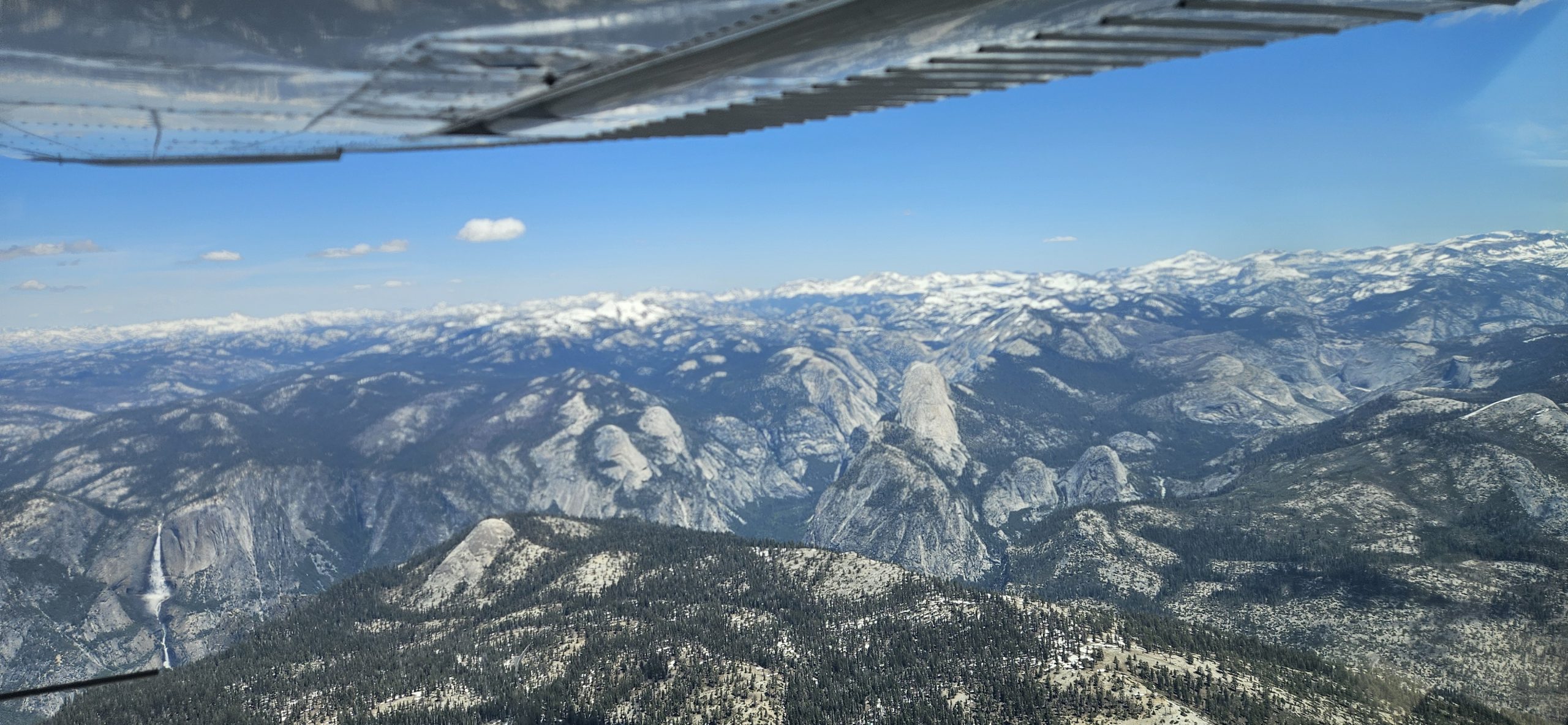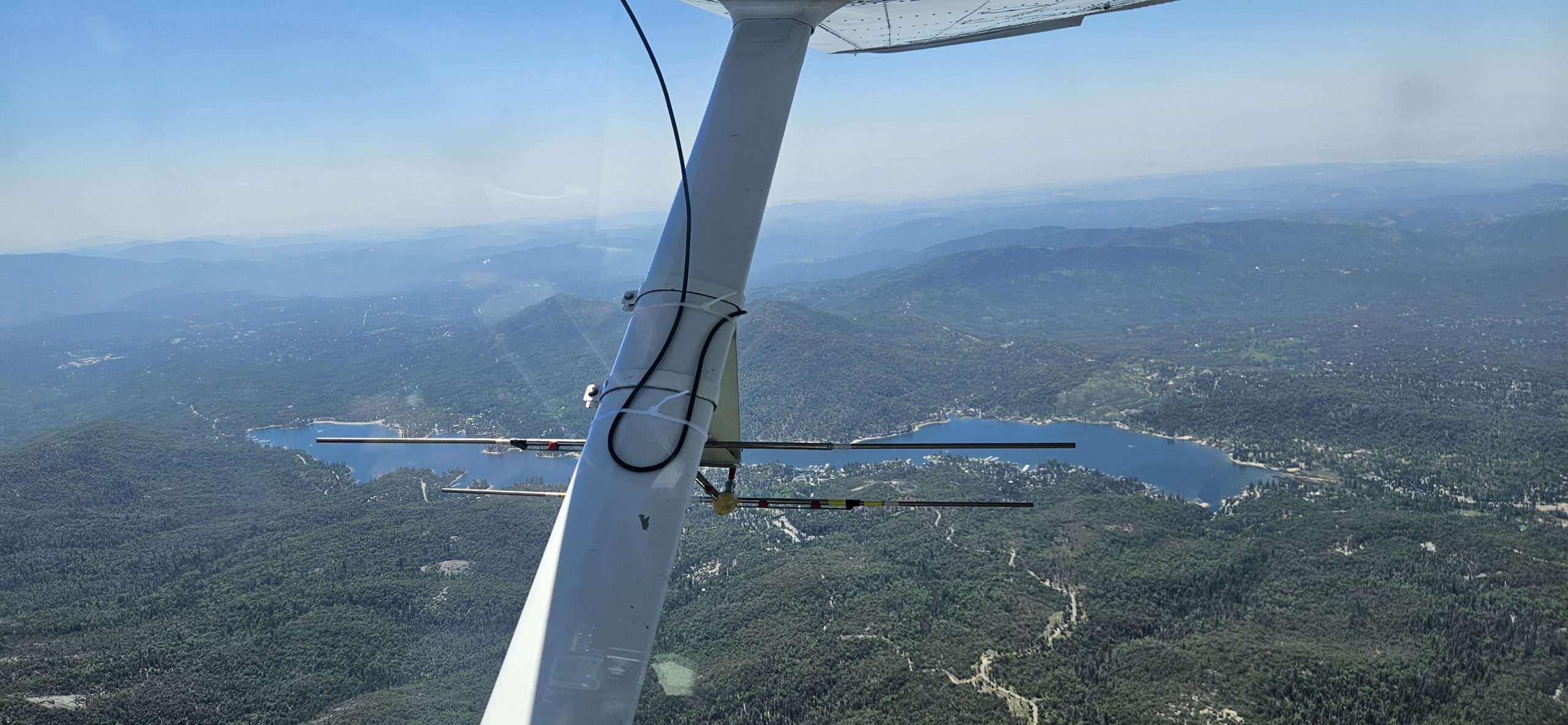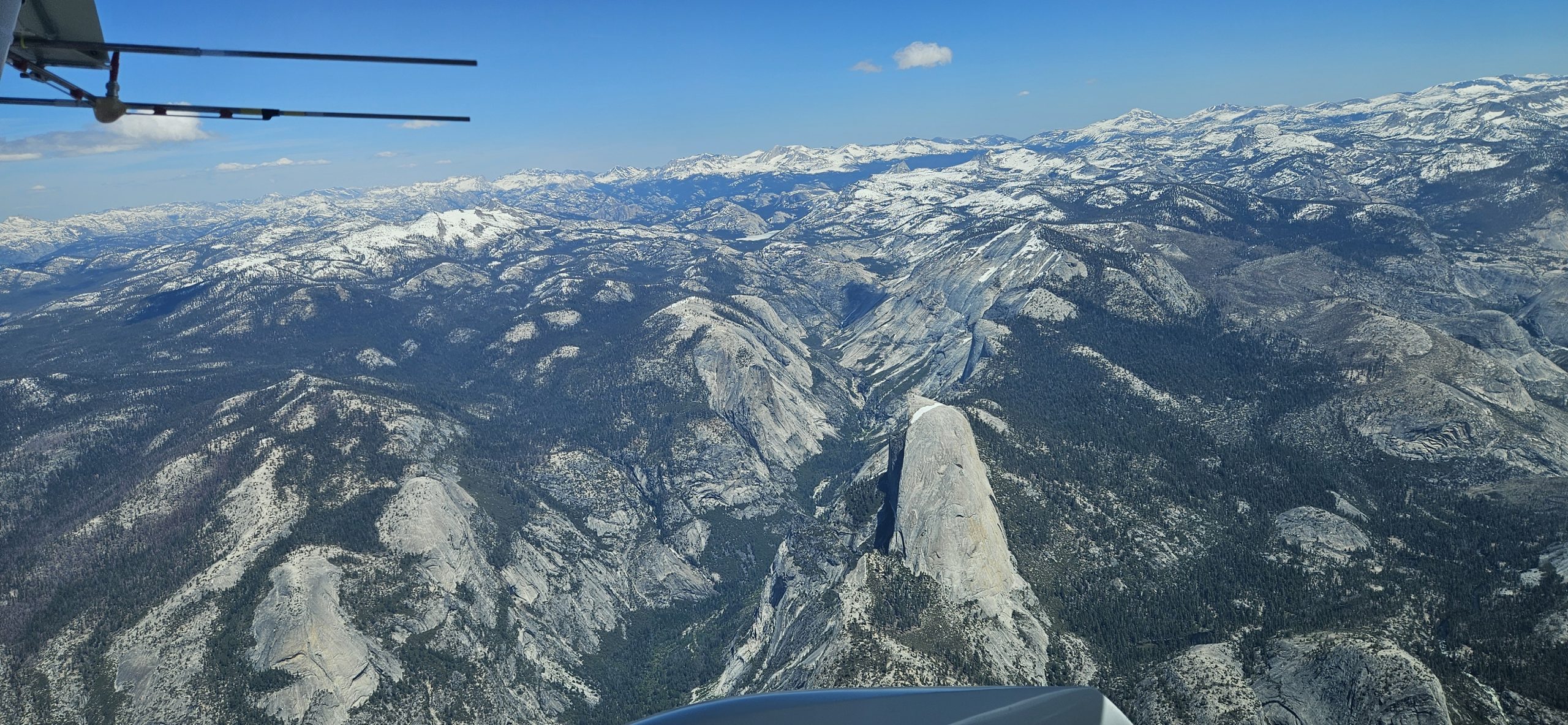
The search for missing fisher M19 took Mark Dedon and passenger Joe Medley over iconic landscapes in Yosemite National Park like Half Dome seen here in the foreground. Photo by Joe Medley.
Yosemite’s towering forests are home to one of California’s most elusive carnivores: the Pacific fisher. Once on the brink of disappearance in the Sierra Nevada, these agile, tree-dwelling mammals are slowly making a comeback thanks to intensive conservation efforts. LightHawk is playing a vital role in supporting this work from above—helping biologists monitor movements and search for missing animals.
When the signal from a young male fisher known as M19 went dark, Yosemite National Park staff turned to LightHawk for help. The mission: fly a radio telemetry survey to search for signs of the missing animal before his collar’s battery died completely. For volunteer pilot Mark Dedon, a former wildlife biologist himself, it was a chance to combine his passion for aviation with a commitment to species recovery.
Here’s Mark’s account of that flight:
The Planning
For volunteer pilot Mark Dedon, flights like this are more than just time in the air—they’re a return to his roots. A former wildlife biologist with PG&E, Mark is especially drawn to missions that support species recovery. When Yosemite biologists reached out about M19’s missing signal, he was quick to answer the call.
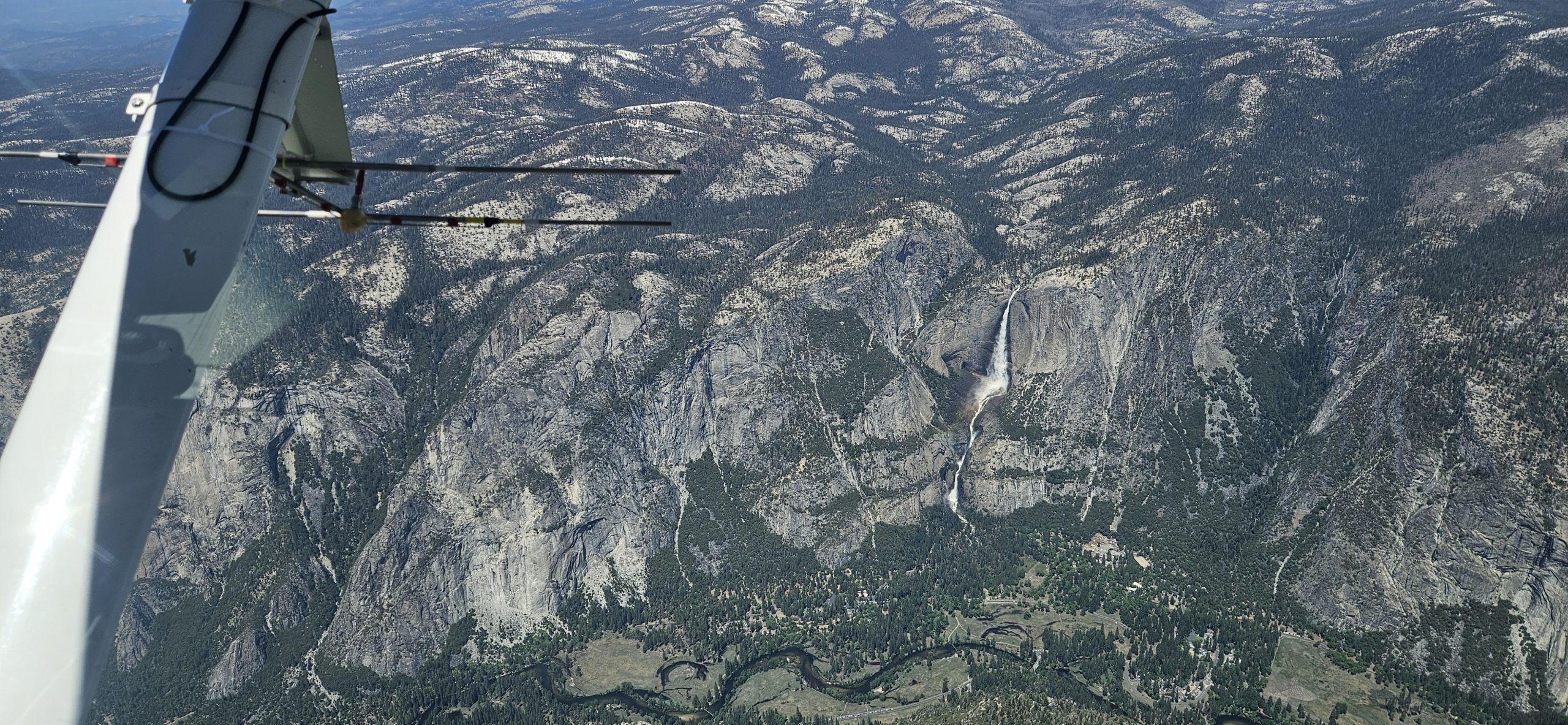
The flight was over rugged, though beautiful terrain. Yosemite is home to some of the most beautiful landscapes in the country as well as an abundance of wildlife. Photo by Joe Medley.
Alongside volunteer biologist Joe Medley, Mark prepared to fly a telemetry survey over one of the most iconic—and complex—landscapes in the country. Yosemite National Park’s dramatic terrain makes flying challenging on its own, but the skies above the park are often busy with helicopter tours, supply flights, and other aerial activity. Add in the urgency of locating a silent tracking collar before its battery died, and the stakes were clear.
To ensure safety and success, Mark coordinated closely with park staff and local operators. Together, they developed a flight plan that would allow for thorough telemetry coverage without interfering with other park flights. Biologists shared a KML file of past fisher locations and likely habitat zones, guiding the team’s search over steep canyons and dense forests.
The Flight
Mark departed from Livermore, CA (KLVK) and met biologist Joe Medley at Mariposa-Yosemite Airport (KMPI). After fitting the telemetry antenna to the strut of Mark’s Cessna 182, they got airborne and climbed to 2,000 feet AGL to begin the search.
Due to the high elevation, both Mark and Joe used supplemental oxygen. Once over the target polygons, they flew a series of parallel transects to systematically cover the area. Throughout the flight, they picked up intermittent signals on M19’s frequency but nothing conclusive.
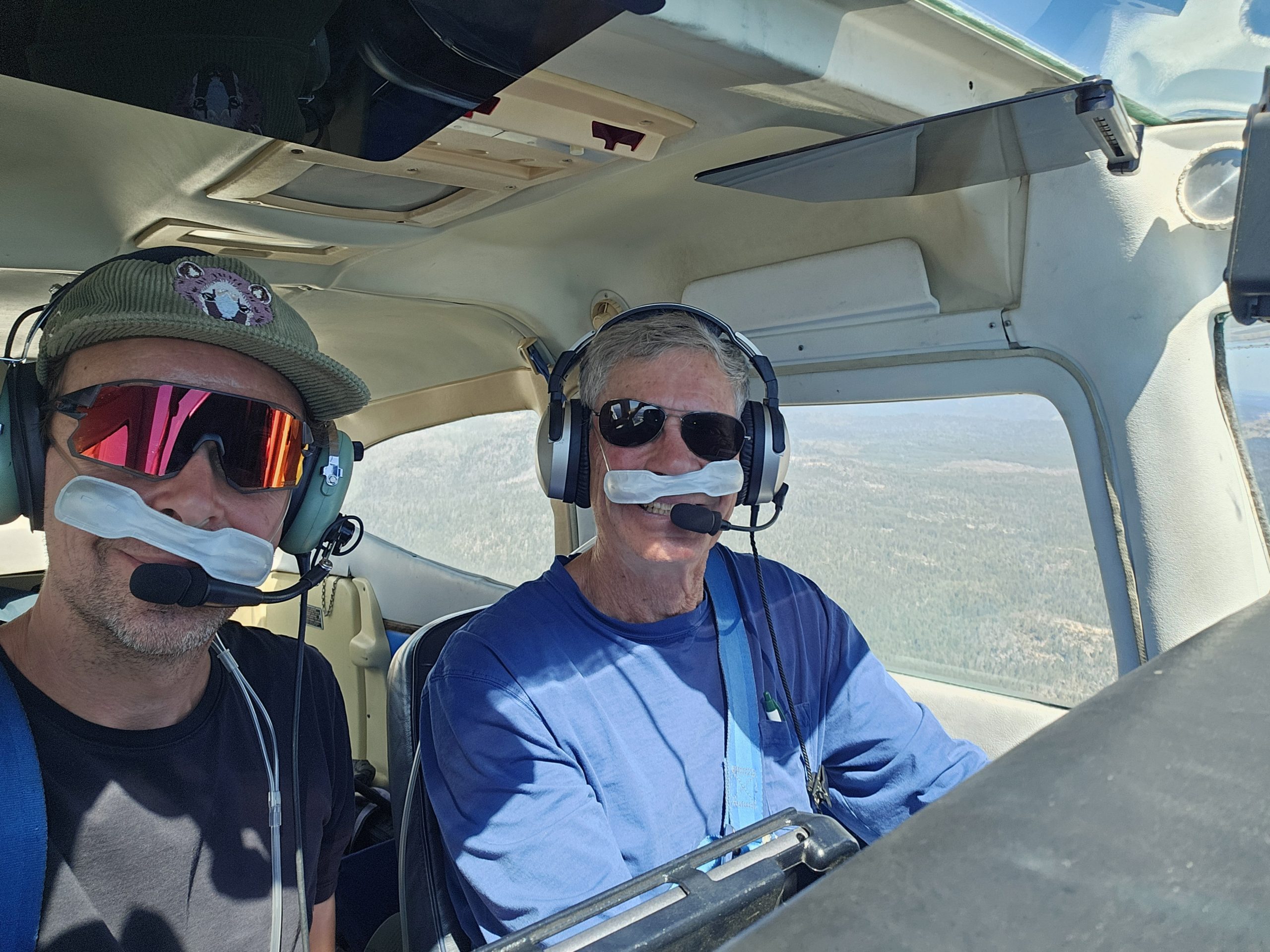
The terrain required Mark to fly at altitudes around 12,000 feet in order to stay at or above 2,000 AGL. That meant using supplemental oxygen during the flight. Photo by Joe Medley.
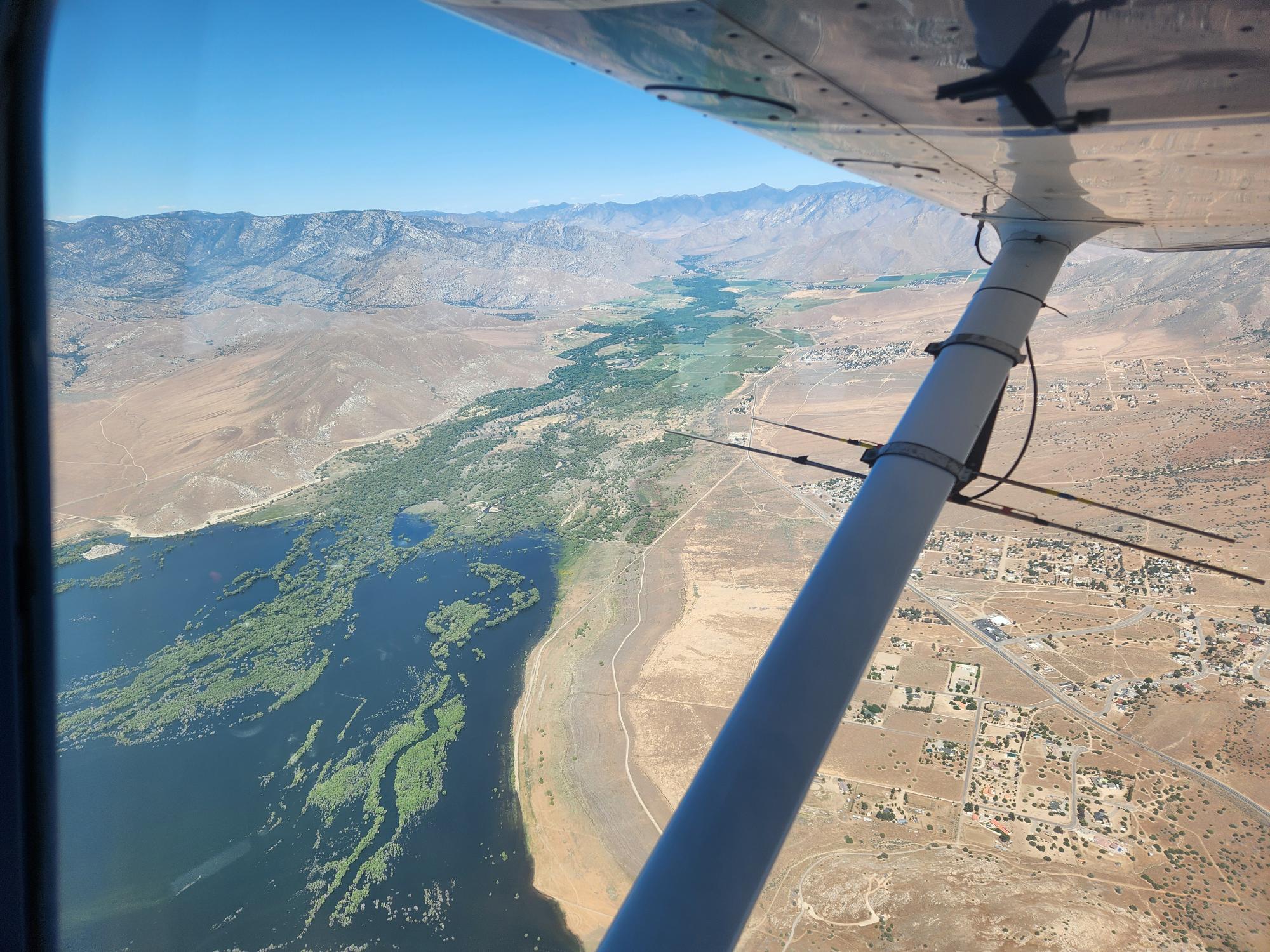
Mark and Joe conducted the search throughout the park as well as areas just outside the park known to be fisher habitat. Photo by Joe Medley.
“We spent a good four hours searching the park and some adjacent areas with suitable habitat,” Mark said. “I stayed in regular contact with air traffic control, checking in and getting permission to drop off the frequency briefly to focus on telemetry, then coming back to check in.”
The flight took them over iconic Yosemite landmarks, including Half Dome and Yosemite Falls. “We were up around 12,000 feet. Half Dome was prominent and very pretty. We got some nice pictures from our flight.”
The Results
Despite their best efforts, Mark and Joe were unable to locate Fisher M19. While disappointing, this is an inherent part of wildlife conservation. Not every mission ends in a confirmed sighting, but each flight contributes valuable lessons that inform future efforts.
One such lesson came after the flight, when Mark invited a friend with Pinnacles National Park to bring their radio telemetry equipment to his hangar to investigate the spurious signal interference they had experienced on M19’s frequency. They discovered the issue was interference caused by the aircraft’s ADS-B navigation system. “We tested it with the navigation system turned on and off,” Mark explained. “The problem was the ADS-B system. It was only interfering with M19’s frequency, not the others.”
For future telemetry flights, Mark thinks that temporarily disabling ADS-B during the search will improve signal clarity.
Although M19 remains unaccounted for, park officials are already collaborating with LightHawk Wildlife Program Manager Brooke George to schedule a follow-up mission to search for additional fishers. Mark has expressed interest in continuing to support the project. “What I really love about these flights is the connection to the bio community,” he shared. “My background is wildlife biology.”
Yosemite National park provided a stunning backdrop to the telemetry flight. The park is home to a number of endangered fishers that can be difficult to locate from the ground – making telemetry flights by LightHawk invaluable. Photos by Joe Medley.

